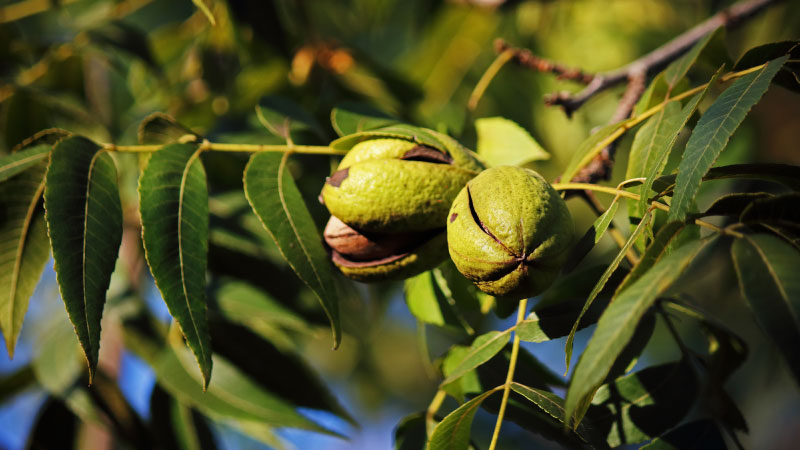Crop Protection Focused On Almonds

Like virtually all companies affiliated with the almond business, Syngenta used to focus on selling its products to growers. Now the company is changing its viewpoint, standing alongside the grower, who obviously is not so much concerned about the products as he is about the crop.
“We’re trying to view the market through the eyes of the grower, who looks at the crop and the farm in a holistic way,” says Mike DiPaola, who heads up Syngenta’s permanent crop portfolio in North America. “We have to be strategically organized in a fashion that aligns itself with how growers view their crops.”
Looking at the crop the way a grower looks at it means getting in tune with all the issues almond growers wrestle with, such as onerous regulations. A good example of how Syngenta is changing would be adjusting to air quality regulations, specifically volatile organic compounds, or VOCs. DiPaola says the company reformulated the popular product Agri-Mek so it would have 88% less VOC emission potential, specifically engineering it because growers needed that technology.
“Syngenta saw this coming and decided we wanted to have this tool in almond growers’ hands before the new regulations were in place,” he says. “We’re not just selling products; we’re constantly innovating with the growers of today and tomorrow in mind.”
Minimizing Resistance
Syngenta actually started on the journey to become more crop-focused in almonds a few years ago with Vangard and Quadris Top, two top fungicides for almonds, says DiPaola. They began to look at the situation from a resistance standpoint, and from there began to look at the crop itself, rather than the old way of making the product fit the crop.
“Many companies, when they focus on products, just shove a product into a crop,” he says. “We’re not taking a row crop mentality to almond growers. We’re not just turning out widgets and saying, ‘OK, how can we fit this into almonds?’ We begin with the crop and grower in mind.”
Of course, Syngenta has an advantage in taking such an approach because it has a lot of firepower. The company annually spends $1.25 billion on research and development, and has 5,000 R&D professionals worldwide. In total, Syngenta has 27,000 employees in more than 90 countries. Sales totaled $14.2 billion in 2012. “We have a strong and robust infrastructure and we’re looking at investing in agribusiness,” says DiPaola.
Bright Future
In adopting the crop-focused approach, Syngenta started with almonds because the crop is doing so well overall. California’s industry also has the advantage in that it’s responsible for 80% of global production. All systems are go, says DiPaola. “We see the almond crop as vibrant, growing, and stable,” he says. “We don’t see a bubble. It’s growing, but quite stable.”
Another reason to focus on almonds is that one of Syngenta’s missions is feeding the world.
“And almonds have a big place in that because they are very nutritious,” he says. “We know MRLs and other factors directly impact growers’ access to export markets and ability to feed the world. Addressing those hurdles is just another way our crop focus helps Syngenta attend to the specific needs of the almond grower.”
On The Ground

Syngenta is not simply changing its strategy in the almond
market, it’s beefing up its roster of agronomists on the ground in almond orchards throughout California. Headquartered in Roseville near the state capitol of Sacramento, the California office used to be quite small.
“Western operations used to be managed from our East Coast headquarters, and there were just five people based in the West prior to recent changes, mostly marketing staff,” says Alex Cochran, Syngenta agronomy service manager, noting there are now nine agronomists in the region, with almost half focusing on almonds. “We’ve shifted our management operations from the East Coast back to the West. It’s been well-received by our customers, and we feel like we are more connected.”
The team’s primary focus is on orchard health, and that starts with the roots, says Cochran. It’s a good year to emphasize the roots because of tight water constraints on growers, particularly those on the West side of the San Joaquin Valley. “You need that root system to get every bit of water available,” he says. “Almonds are pretty efficient, but you shouldn’t take the root system for granted. People underestimate the impact of root health.”
In one study, agronomists are applying Ridomil Gold via microsprinklers on young almond blocks. It’s a new application approach, and worth noting that the results have really been impressive, says Cochran. The study demonstrates the impact of how phytophthora slows down trees’ development, and the importance of root health on overall tree health.
“Phytophthora injury in tree nuts particularly can be subtle, but becomes much more obvious in extreme conditions. It goes without saying trees with poorer root systems will be more vulnerable to various issues,” he says. “Especially if you have a full canopy with high winds when the trees are 10 years and older and can get blown over. That’s a real loss — when the orchard is at its peak.”
As for new products for almond growers, Syngenta will be introducing a new broadleaf residual herbicide. Cochran says they hope to have it registered ideally by the fourth quarter of 2014, but more likely in 2015. Growers, who are dealing with glyphosate resistance, should appreciate the fact that the active ingredient is particularly strong. Just as important, it will provide an alternative mode of action.
“It’s not just new products that are important, it’s new modes of action, that’s the key,” he says. “Resistance management is top of mind, and we’ve got a lot of modes of action to throw at these pests that growers are battling.”









